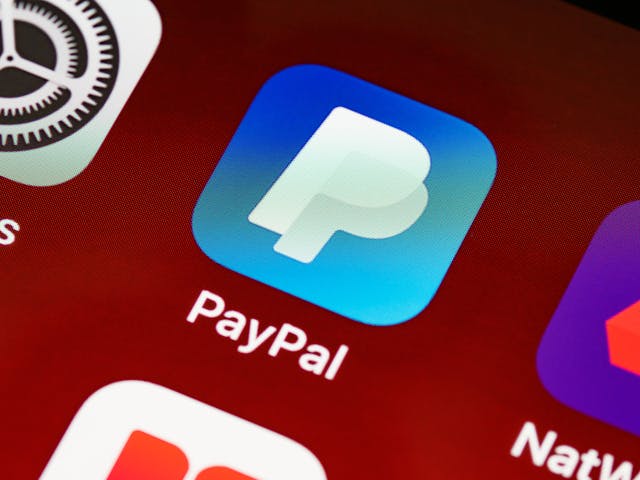Table of Contents
How to Avoid PayPal Scams: A Comprehensive Guide
How to Avoid PayPal Scams: In today’s digital age, platforms like PayPal have made online transactions simpler, faster, and more secure for millions of people worldwide. However, with the rise of these conveniences comes the increasing threat of online fraud and scams. PayPal, despite its robust security measures, is still a target for scammers trying to exploit unsuspecting users. To protect yourself, it’s essential to understand the different types of PayPal scams and adopt best practices for securing your account. This article will explore how PayPal scams work and provide practical tips to avoid falling victim to them.
Common Types of PayPal Scams
1. Phishing Scams
Phishing is a common online scam where attackers impersonate legitimate companies to trick individuals into revealing sensitive information like passwords, credit card numbers, or social security numbers. Phishing scams often come in the form of fake emails, messages, or websites designed to look exactly like PayPal’s official site or communication.
– How It Works: You may receive an email that looks like it’s from PayPal, asking you to verify your account or change your password. These emails usually contain a link that leads to a fake website designed to capture your login details or personal information.
– How to Avoid It: Always be cautious with unsolicited emails or messages, even if they appear to come from PayPal. PayPal will never ask for sensitive information through email. Verify the sender’s email address and hover over links to see where they lead before clicking. When in doubt, log in to your PayPal account directly from the official website rather than through a link in an email.
2. Overpayment Scams
Overpayment scams usually target sellers. The scammer sends a payment that exceeds the agreed-upon amount and then asks for the difference to be refunded. In reality, the original payment is fraudulent, and once it is reversed, the seller is left without the item and the refund.
– How It Works: A scammer makes a purchase from you but pays more than the agreed price. They then contact you, claiming it was a mistake, and request that you refund the difference. Once you send the refund, they file a claim with PayPal saying they never received the item or used a stolen payment method.
– How to Avoid It: Never accept overpayments or agree to refund money in this manner. If you receive an overpayment, it’s better to refund the entire amount and ask the buyer to send the correct payment instead.
3. Shipping Address Scams
Scammers may use incorrect shipping addresses or exploit PayPal’s shipping policies to their advantage, either by providing a fake address or altering the shipping details after the purchase.
– How It Works: A buyer makes a purchase and provides an incorrect shipping address, often asking you to ship to a different one. After the item is shipped, they claim they never received it or that the address was wrong, leaving you responsible.
– How to Avoid It: Always ship to the address provided on the PayPal transaction details page, as PayPal’s Seller Protection only covers items shipped to the buyer’s registered address. If the buyer requests to change the shipping address after payment, refund the transaction and ask them to pay again with the correct details.
4. PayPal Account Hacking
Scammers may attempt to hack into your PayPal account and drain funds or make unauthorized purchases. This typically happens through phishing attacks, malware, or weak passwords.
– How It Works: A scammer gains access to your account by stealing your login details or exploiting a vulnerability in your device. They then transfer money to their own account, make purchases, or use your account for illegal activities.
– How to Avoid It: Use a strong, unique password for your PayPal account and enable two-factor authentication (2FA) for an extra layer of security. Regularly monitor your account for any suspicious activity and update your password if you notice anything unusual.
5. Advanced Fee Scams
In this type of scam, scammers trick people into believing they have to pay an upfront fee to receive a large sum of money. These schemes often claim that a small payment is needed to unlock a larger prize, loan, or inheritance.
– How It Works: You may receive an email or message saying you’ve won a large sum of money or are entitled to a massive loan, but you need to pay a fee upfront to claim it. Once you send the payment, the scammer disappears, and you receive nothing in return.
– How to Avoid It: Never send money or provide personal information in response to unsolicited offers of large sums of money, loans, or prizes. If it sounds too good to be true, it probably is.
Practical Steps to Avoid PayPal Scams
1. Enable Two-Factor Authentication (2FA)
How to Avoid PayPal Scams: Two-factor authentication adds an extra layer of security by requiring two forms of identification: your password and a one-time code sent to your phone or email. Even if someone gets hold of your password, they won’t be able to access your account without the second form of verification.
– How to Set It Up: Go to your PayPal settings, select “Security,” and enable two-factor authentication. This will prompt you to provide a phone number or email where PayPal will send the code each time you log in.
2. Regularly Monitor Your Account Activity
How to Avoid PayPal Scams: Keeping an eye on your PayPal account is crucial. Regularly reviewing your transaction history can help you spot unauthorized transactions early. If you notice any activity you didn’t authorize, report it to PayPal immediately.
– How to Do This: Log in to your PayPal account, navigate to “Activity,” and review recent transactions. If you see anything unusual, contact PayPal’s support team to resolve the issue.
3. Be Skeptical of Unsolicited Communications
How to Avoid PayPal Scams: Scammers often rely on unsolicited emails, phone calls, or text messages to trick users into providing sensitive information. If you receive a suspicious communication that claims to be from PayPal, it’s best to ignore it and report it.
– How to Spot It: PayPal always addresses customers by their first and last name in official communications. Emails that begin with “Dear Customer” or “Dear User” are red flags. Never provide personal or financial information in response to unsolicited messages.
4. Verify URLs Before Clicking Links
How to Avoid PayPal Scams: Many phishing attacks involve fake websites that mimic the real PayPal site. Before clicking on a link, hover your mouse over it to see the actual URL. If the address looks suspicious or unfamiliar, don’t click.
– How to Do This: Always go directly to PayPal.com by typing the URL into your browser, rather than clicking links in emails. Scammers often use domains that look similar to PayPal, such as “paypa1.com” or “paypal-secure.com,” to fool unsuspecting users.
5. Don’t Fall for “Urgent” Claims
How to Avoid PayPal Scams: Scammers often try to create a sense of urgency to push victims into making quick decisions without thinking. If you receive a message saying your account will be closed unless you act immediately, take a step back and verify the claim with PayPal.
– How to Handle It: Log in to your PayPal account directly and check if any notifications are present. If there’s no mention of an issue, the message you received is likely a scam.
6. Use PayPal’s Resolution Center
How to Avoid PayPal Scams: PayPal offers a Resolution Center to help resolve disputes between buyers and sellers. If you’ve been scammed or believe a transaction was unauthorized, you can report the issue through the Resolution Center, where PayPal will investigate and attempt to resolve it.
– How to Access It: Log in to your PayPal account, click on “Resolution Center,” and follow the prompts to report a problem. Provide as much detail as possible to support your claim.
Conclusion
PayPal is a trusted and reliable platform for online transactions, but it’s essential to remain vigilant and informed about the various scams that target users. By following the steps outlined in this guide, you can significantly reduce your risk of falling victim to PayPal scams. Always be cautious when dealing with unsolicited messages, double-check transaction details, and enable all available security measures to protect your account. Remember, staying safe online starts with being aware of the threats and taking proactive steps to avoid them.


